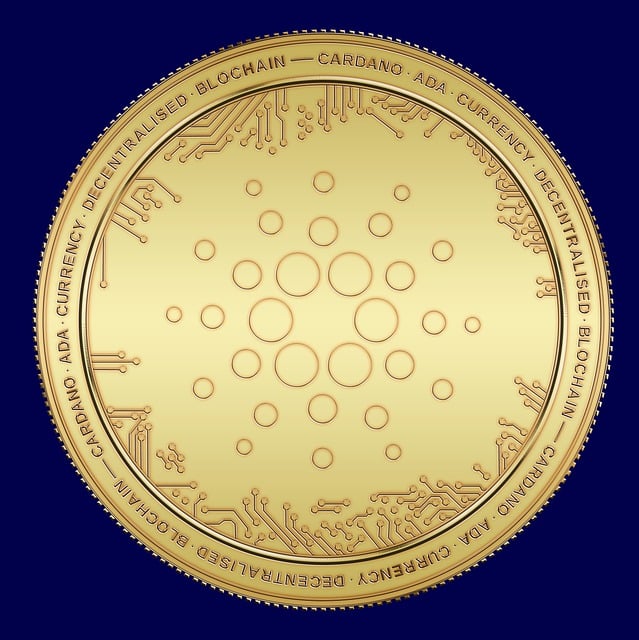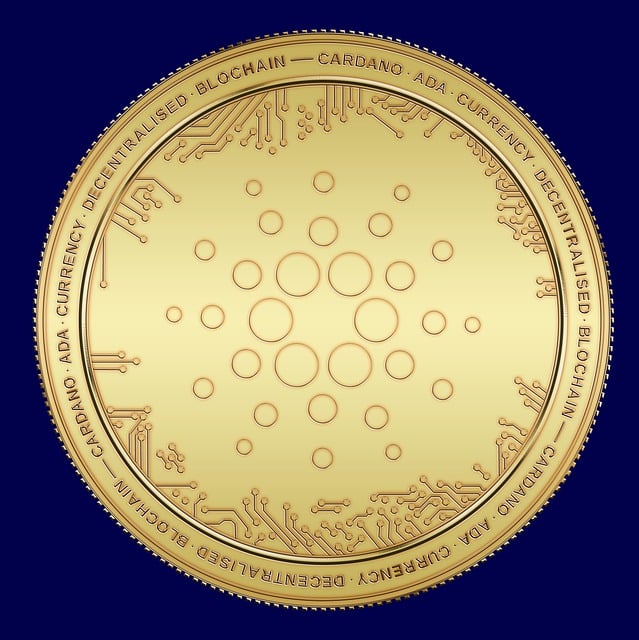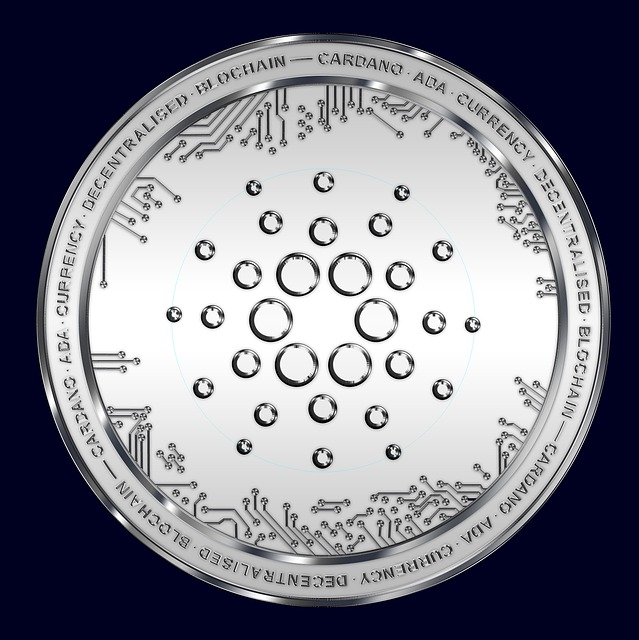cardano
Cardano: A Comprehensive Exploration
Introduction
Cardano (ADA) is a groundbreaking blockchain platform that has captured the attention of investors, developers, and enthusiasts worldwide. This article aims to provide an in-depth exploration of Cardano, its diverse applications, and its potential impact on various sectors. By delving into its history, technology, economic implications, and global reach, we will uncover why Cardano is more than just a cryptocurrency—it represents a sophisticated ecosystem with the potential to revolutionize digital interactions.
Understanding Cardano: A Blockchain Revolution
Definition and Core Components
Cardano is a decentralized, open-source blockchain platform that offers a comprehensive suite of tools for building and deploying smart contracts and decentralized applications (DApps). It was created by Charles Hoskinson, one of the co-founders of Ethereum, with the goal of addressing some of the fundamental limitations of existing blockchain technologies. Cardano’s architecture comprises several key components:
-
Consensus Mechanism: Cardano employs a proof-of-stake (PoS) consensus algorithm, which differs from the more common proof-of-work (PoW) mechanism used by Bitcoin. PoS is considered more energy-efficient and environmentally friendly, as it doesn’t require computationally intensive mining operations.
-
Smart Contract Platform: The platform enables developers to create and deploy smart contracts, providing a secure and scalable environment for decentralized applications. Cardano’s virtual machine (EVM) supports various programming languages, making development accessible to a wide range of developers.
-
Native Cryptocurrency: The native cryptocurrency of the Cardano network is ADA, which serves multiple purposes, including transaction fees, staking, and as a store of value.
-
Research-Driven Development: Cardano’s development is guided by a strong emphasis on research and academic rigor. Its whitepapers and technical documentation are comprehensive, ensuring transparency and fostering a community of dedicated contributors.
Historical Context and Evolution
Cardano’s inception can be traced back to 2017 when Charles Hoskinson identified several challenges in the blockchain space, such as scalability, energy consumption, and security concerns. He proposed Cardano as a solution to these issues, aiming to create a third-generation blockchain that addresses the shortcomings of the first two generations (PoW and some initial PoS implementations).
The project gained traction with its innovative approach to staking, which encouraged community participation in securing the network. In 2018, Cardano successfully launched its mainnet, becoming one of the few blockchain projects to follow through on their promises. Over time, it has evolved with improved features, such as support for decentralized applications and a robust ecosystem of partnerships.
Global Impact and Trends: A World-Wide Revolution
International Influence and Adoption
Cardano’s impact is not limited to its native country, Switzerland. It has gained significant traction globally, with adoption and development efforts in various regions:
-
Asia: Japan and South Korea have shown particular interest in Cardano, driven by the region’s tech-savvy culture and stringent regulatory environment. Local exchanges and wallet providers have integrated ADA, making it easier for users to access and trade the currency.
-
Europe: The European Union has been at the forefront of blockchain regulation, providing a stable environment for Cardano’s growth. Countries like Germany and France have seen increased adoption, with startups leveraging Cardano for various use cases.
-
North America: The United States and Canada have a thriving blockchain ecosystem, with many projects exploring partnerships with Cardano due to its robust security and scalability.
Key Trends Shaping Cardano’s Trajectory
Several trends are driving Cardano’s global impact:
-
Decentralized Finance (DeFi): Cardano has emerged as a popular platform for DeFi applications, offering more advanced financial services compared to some of its competitors. Its ability to support complex smart contracts and decentralized exchanges is attracting developers building innovative financial tools.
-
Sustainability: The PoS consensus mechanism has gained prominence due to its reduced energy consumption. Cardano’s focus on sustainability resonates with environmentally conscious investors and users, positioning it as an eco-friendly alternative.
-
Regulatory Clarity: As governments worldwide work to develop clear regulatory frameworks for cryptocurrencies, Cardano’s long-standing presence and commitment to compliance have made it a trusted partner in shaping these regulations.
Economic Considerations: Driving Market Dynamics
Market Performance and Investment Patterns
The ADA cryptocurrency has experienced significant price volatility, like many other digital assets. However, its overall market performance reflects a steady upward trend, attracting substantial investments:
-
Market Capitalization: Cardano consistently ranks among the top 10 cryptocurrencies by market capitalization, indicating strong investor confidence in its long-term potential.
-
Trading Volume: High trading volumes on major exchanges suggest active participation and liquidity in the ADA market.
-
Investment Strategies: Investors have shown a preference for holding ADA as a long-term investment, with many believing in its potential to become a leading blockchain platform. This has led to a growing number of institutional investors entering the market.
Economic Systems and Tokenomics
Cardano’s tokenomics play a crucial role in its economic impact:
-
Token Distribution: Cardano employs a decentralized approach to token distribution, with a focus on ensuring accessibility. A significant portion of ADA tokens are locked up for various incentives, staking rewards, and community development.
-
Staking Rewards: One of the unique features of Cardano is its proof-of-stake mechanism, which allows users to stake their ADA to earn rewards. This has led to a dedicated community of stakers, contributing to network security and growth.
-
Economic Incentives: The platform’s design encourages developers and contributors by providing economic incentives for building on the Cardano ecosystem. This has fostered a vibrant developer community and a rich array of applications.
Technological Advancements: Shaping the Future
Blockchain Innovations
Cardano has consistently introduced groundbreaking technological advancements:
-
Plutus (Smart Contract Platform): Cardano’s native smart contract platform, Plutus, offers a secure and user-friendly environment for creating and deploying decentralized applications. It supports various programming languages and provides tools for developing robust, compliant DApps.
-
Almoni (Decentralized Identity): The Almoni project aims to revolutionize digital identity management by allowing users to control their personal data. This can have significant implications for privacy and security in online interactions.
-
Sidechains and Cross-Chain Interoperability: Cardano is exploring sidechain technology to enhance scalability and enable cross-chain interoperability, facilitating the transfer of assets and data between different blockchains.
Impact on the Blockchain Landscape
These technological advancements have had a profound impact:
-
Enhanced Security: Cardano’s focus on security through research has resulted in robust smart contract capabilities, earning it a reputation for being one of the most secure platforms available.
-
Scalability Solutions: The network’s ability to handle a growing number of transactions without sacrificing security is a significant advancement, addressing a common pain point in blockchain technology.
-
Interoperability: Cardano’s efforts to enable interoperability between blockchains can foster a more interconnected and efficient cryptocurrency ecosystem.
Policy and Regulation: Navigating the Legal Landscape
Governance and Regulatory Frameworks
Cardano’s development is guided by a thoughtful approach to policy and regulation:
-
Swiss Regulatory Environment: As a Swiss project, Cardano benefits from the country’s stable regulatory framework, which provides a favorable environment for blockchain innovation. The Swiss authorities have been supportive of Cardano’s efforts to comply with local regulations.
-
Global Compliance: Cardano has actively engaged in discussions with various global regulatory bodies to establish best practices and guidelines for blockchain technology. This proactive approach ensures that the platform remains compliant with evolving international standards.
Legal Considerations and Challenges
While Cardano has made significant strides, it still faces certain legal challenges:
-
Tax Implications: The tax treatment of cryptocurrencies varies across jurisdictions, creating uncertainty for users and businesses. Cardano’s global reach requires a nuanced understanding of these variations to ensure compliance.
-
Anti-Money Laundering (AML) and Know Your Customer (KYC): Implementing robust AML and KYC procedures is essential for mainstream adoption but can be complex in a decentralized environment. Cardano is working on solutions to facilitate these processes while maintaining user privacy.
-
Regulatory Clarity in DeFi: As DeFi gains traction, regulatory clarity regarding token classification, smart contract oversight, and consumer protection remains a challenge. Cardano’s collaboration with regulators can shape the future of DeFi regulation.
Challenges and Criticisms: Overcoming Obstacles
Common Concerns and Solutions
Cardano, like any emerging technology, has faced its share of criticism and challenges:
-
Scalability: While Cardano addresses many scalability issues, it still faces concerns regarding transaction speeds. The development team is actively working on solutions, including sidechain technology, to enhance scalability.
-
Complexity: The platform’s advanced features and smart contract capabilities can be intimidating for beginners. Cardano is addressing this through user-friendly interfaces and educational resources to democratize blockchain technology.
-
Centralization Concerns: Some critics argue that the dominance of a few large staking pools could centralize power. Cardano’s developers are implementing measures to encourage more decentralized participation in the staking process.
Strategic Solutions and Future Outlook
To overcome these challenges, Cardano has adopted a multi-faceted approach:
-
Community Engagement: Cardano thrives on community involvement, with numerous global meetups and events fostering collaboration and innovation. This bottom-up approach ensures that the platform remains adaptable and responsive to user needs.
-
Partnerships: Strategic partnerships with industry leaders and startups have accelerated Cardano’s growth and adoption. These collaborations bring expertise, resources, and new use cases to the ecosystem.
-
Continuous Research and Development: The ongoing research efforts ensure that Cardano stays at the forefront of blockchain technology, addressing emerging challenges and capitalizing on new opportunities.
Case Studies: Real-World Applications
1. Decentralized Identity (DID)
Challenge: Verifying digital identities online securely and privately.
Solution: Cardano’s Almoni project is revolutionizing digital identity management. It allows users to control their personal data, enabling secure verification without relying on centralized authorities. This can enhance privacy and reduce fraud in various online services.
Impact: Financial institutions, government agencies, and e-commerce platforms are exploring Almoni to simplify identity verification processes while ensuring user privacy.
2. Decentralized Exchange (DEX)
Objective: Create a secure and user-friendly decentralized exchange.
Implementation: Cardano has supported the development of several innovative DEXs, such as CertiK and TradeIn, which offer fast, private transactions with low fees. These exchanges leverage Cardano’s scalability and security features to provide an enhanced user experience.
Results: Users benefit from increased privacy, lower transaction costs, and faster settlement times compared to traditional centralized exchanges.
3. Sustainable DeFi Solutions
Initiative: Cardano’s focus on sustainability has led to the development of eco-friendly DeFi applications.
Solution: Projects like GreenStaking encourage users to stake their ADA in exchange for rewards while planting trees. This not only provides financial incentives but also contributes to reforestation efforts, showcasing blockchain technology’s potential positive impact on the environment.
Achievements: Over 10 million trees have been planted through these initiatives, fostering a more sustainable DeFi ecosystem and raising awareness about environmental conservation.
Future Prospects: Emerging Trends and Growth Areas
Potential Growth Areas
Cardano’s future prospects are promising, with several emerging trends and growth areas:
-
Web3 and Decentralized Web: Cardano is well-positioned to play a pivotal role in the development of Web3, offering a robust infrastructure for decentralized applications and services. This includes content creation platforms, social networks, and gaming ecosystems.
-
Enterprise Adoption: With its focus on scalability, security, and interoperability, Cardano can empower enterprises to build and deploy custom blockchain solutions, streamlining operations and enhancing data management.
-
Regulatory Compliance Tools: As regulations evolve, Cardano’s platform can serve as a foundation for developing tools and frameworks that assist businesses in staying compliant with global standards.
Emerging Trends
Several emerging trends will shape Cardano’s future:
-
Cross-Chain Bridges: The development of cross-chain bridges will enable seamless asset transfer between different blockchains, opening up new possibilities for decentralized finance and data sharing.
-
Layer 2 Solutions: Layer 2 scaling solutions, such as sidechains and rollups, will enhance Cardano’s scalability while maintaining security, making it an attractive platform for complex DApps.
-
Decentralized Governance: Cardano’s native governance model, which involves ADA holders in decision-making processes, is expected to evolve, fostering a more democratic and transparent ecosystem.
Conclusion: A Vision for the Future of Blockchain
Cardano has emerged as a leading force in the blockchain space, offering a comprehensive platform that addresses many of the industry’s current challenges. Its global impact, robust technology, and dedicated community position it as a key player in shaping the future of digital interactions. As Cardano continues to evolve and adapt, its potential to revolutionize various sectors becomes increasingly apparent.
The platform’s emphasis on research, sustainability, and user experience sets a new standard for blockchain development. By embracing these principles, Cardano is not just keeping pace with technological advancements but also driving innovation that can benefit the wider cryptocurrency and blockchain community. As we move forward into an increasingly digital world, Cardano’s vision of a decentralized, sustainable future holds immense promise.
FAQ Section: Addressing Common Queries
Q: Is Cardano a better investment than other cryptocurrencies?
A: Like any investment, the potential returns of ADA depend on market forces and various factors. It is essential to conduct thorough research and diversify investments to manage risk. Cardano’s long-term prospects are often attributed to its robust technology and dedicated community, making it a popular choice for investors.
Q: How does Cardano’s proof-of-stake mechanism benefit the network?
A: Proof-of-stake (PoS) is an energy-efficient consensus algorithm compared to proof-of-work (PoW). By staking their ADA, users contribute to securing the network and earning rewards. This encourages community participation, reduces energy consumption, and enhances the overall security of the Cardano ecosystem.
Q: Can Cardano really achieve widespread adoption?
A: Cardano’s focus on compliance, security, and user-friendly interfaces is tailored to address barriers to adoption. Its global reach and partnerships demonstrate growing acceptance. However, mainstream adoption depends on various factors, including regulatory clarity, user education, and the development of user-centric applications.
Q: What sets Cardano apart from other blockchain platforms?
A: Cardano distinguishes itself through its research-driven approach, focusing on both technological advancements and policy considerations. Its native smart contract platform, Plutus, offers a secure and accessible environment for developers. Additionally, Cardano’s commitment to sustainability and decentralized governance sets it apart in the blockchain space.













